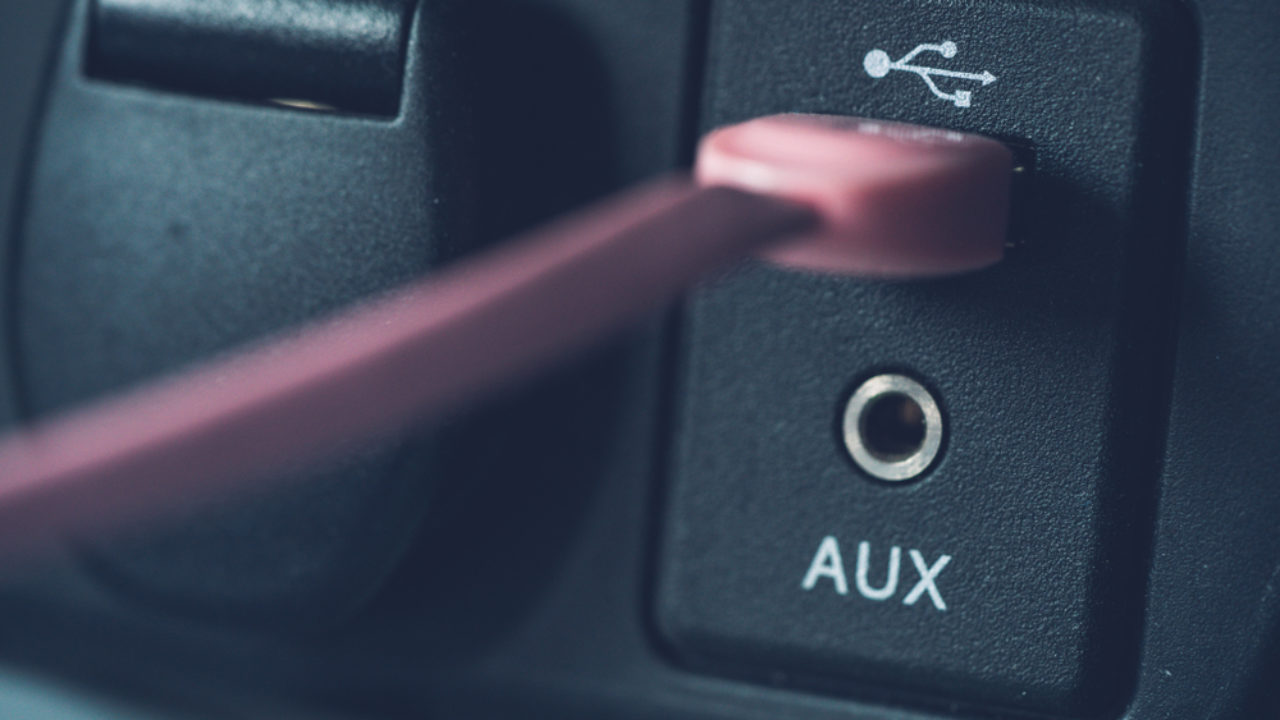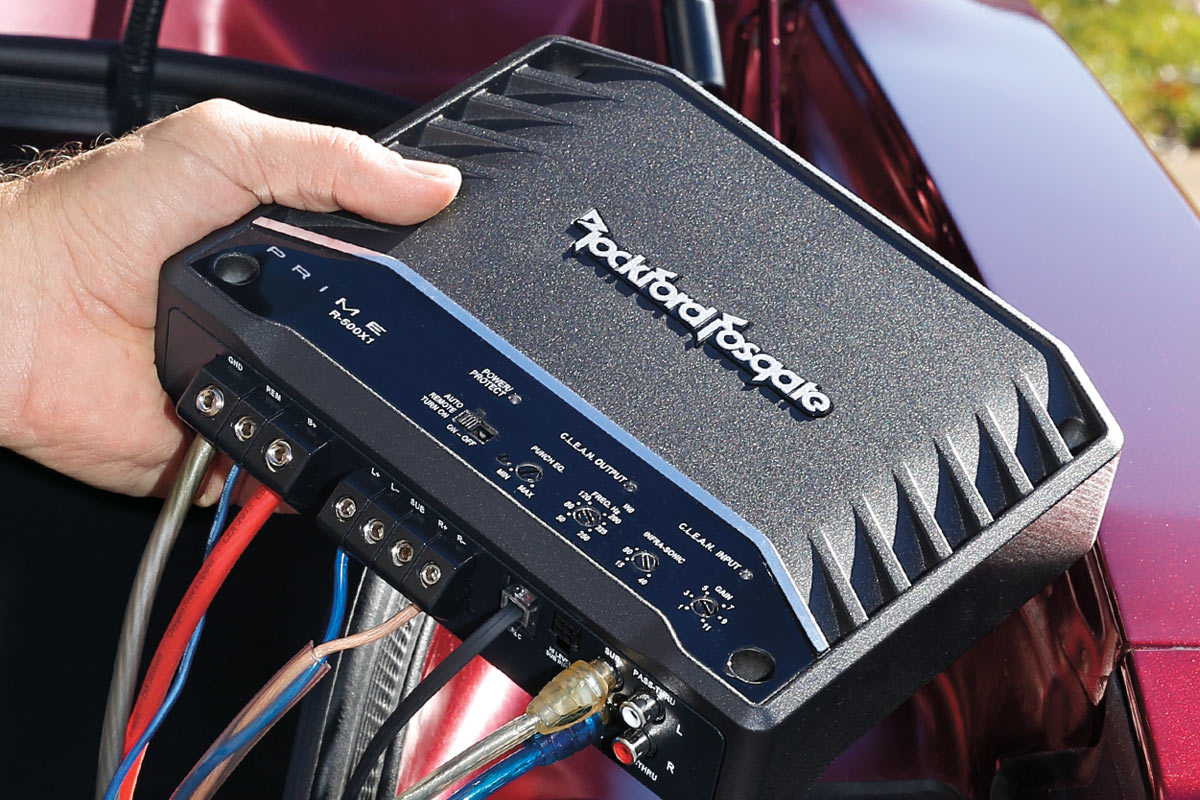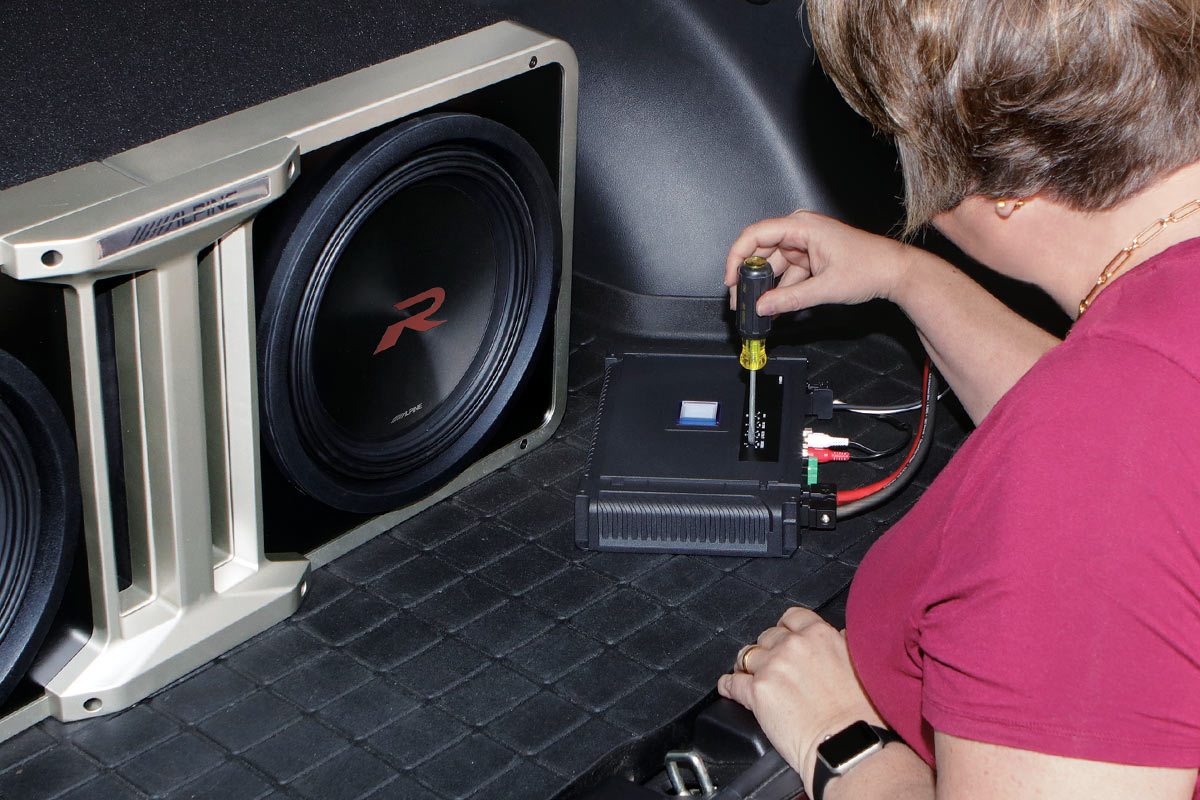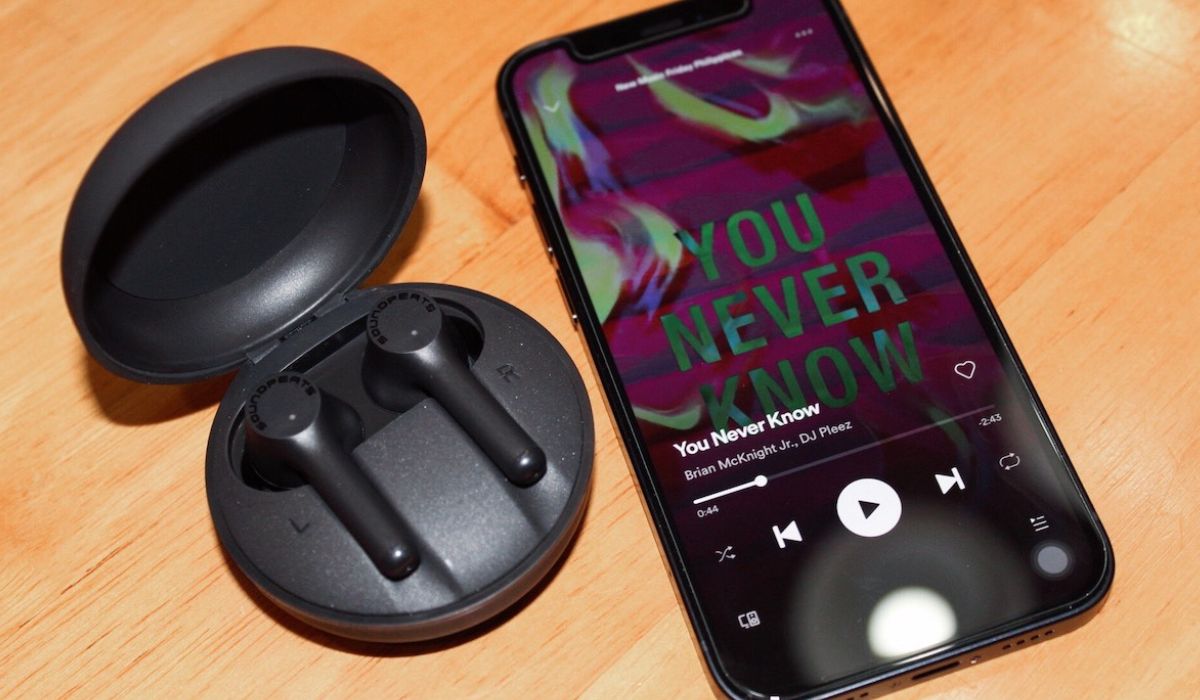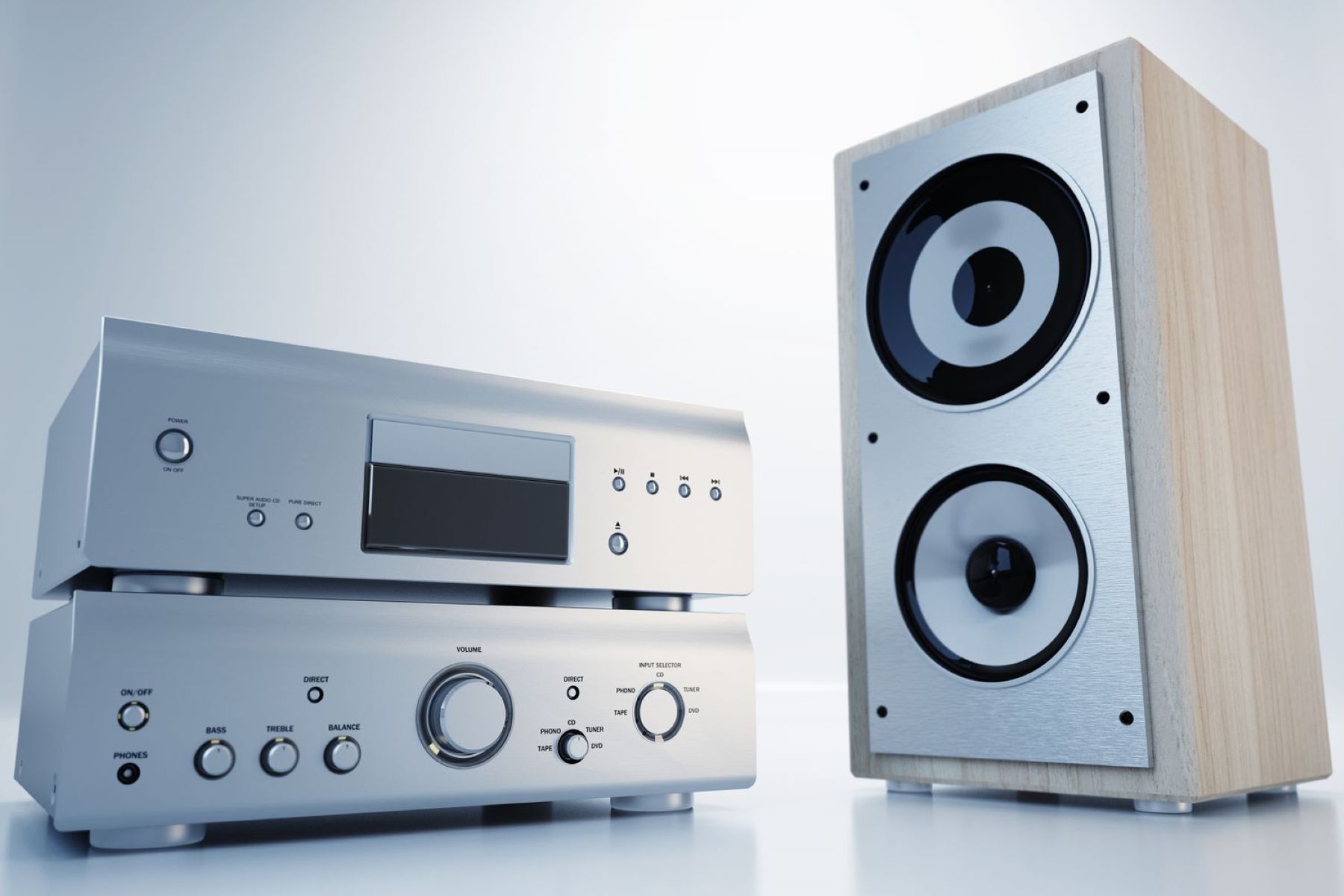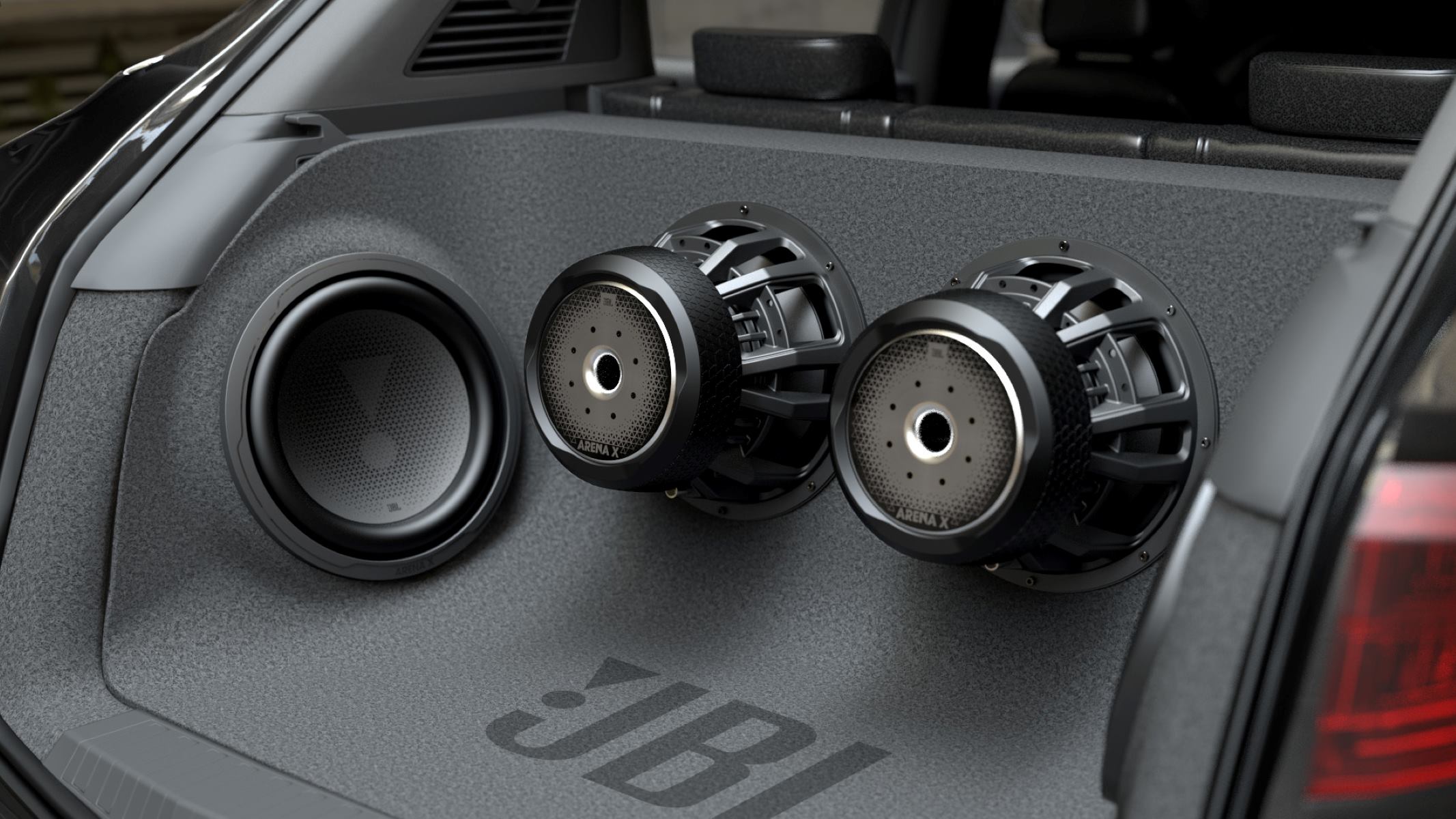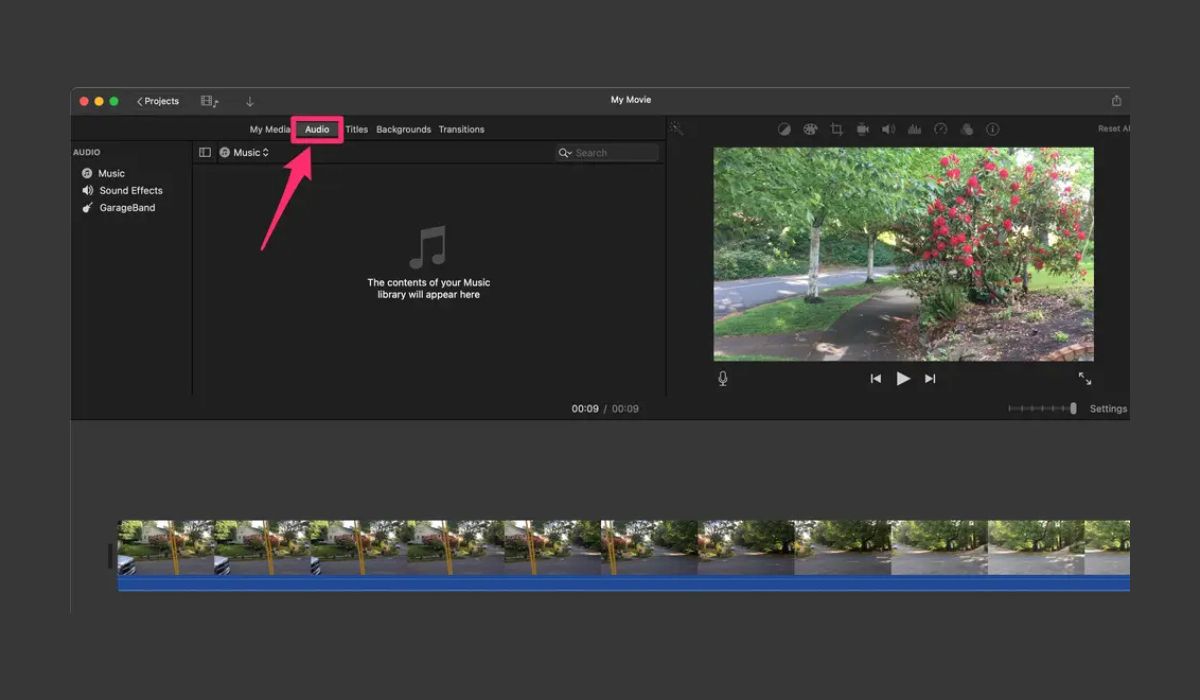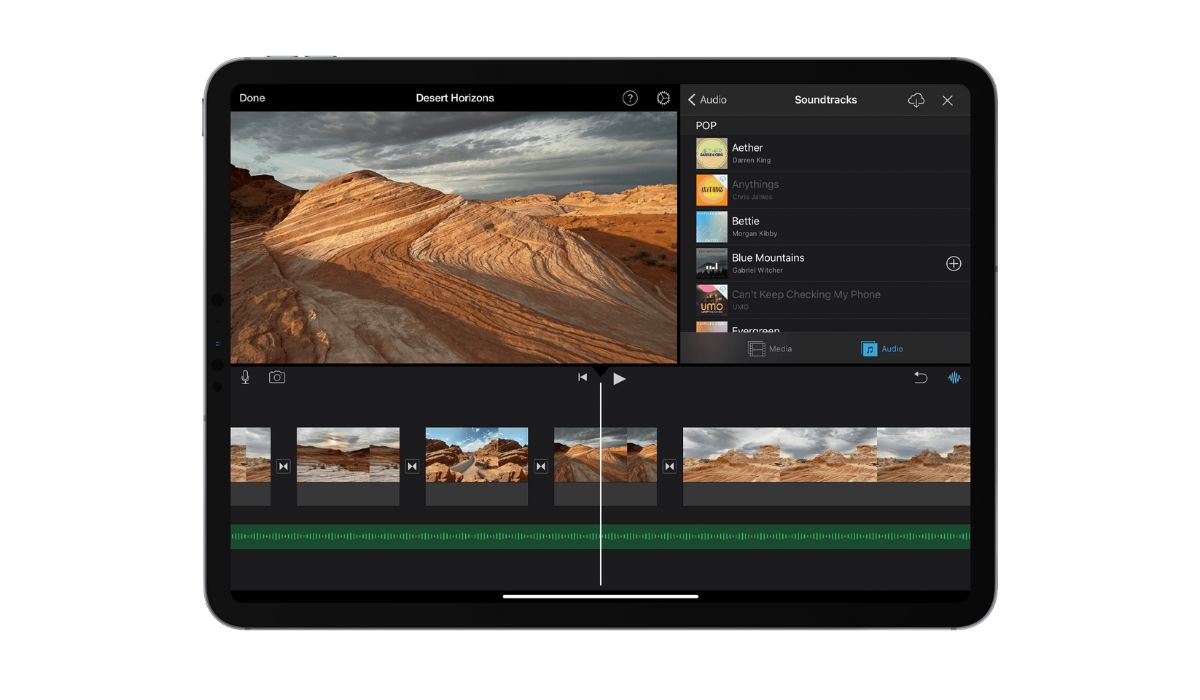Home>Production & Technology>Stereo>How To Add Subwoofer To Factory Stereo
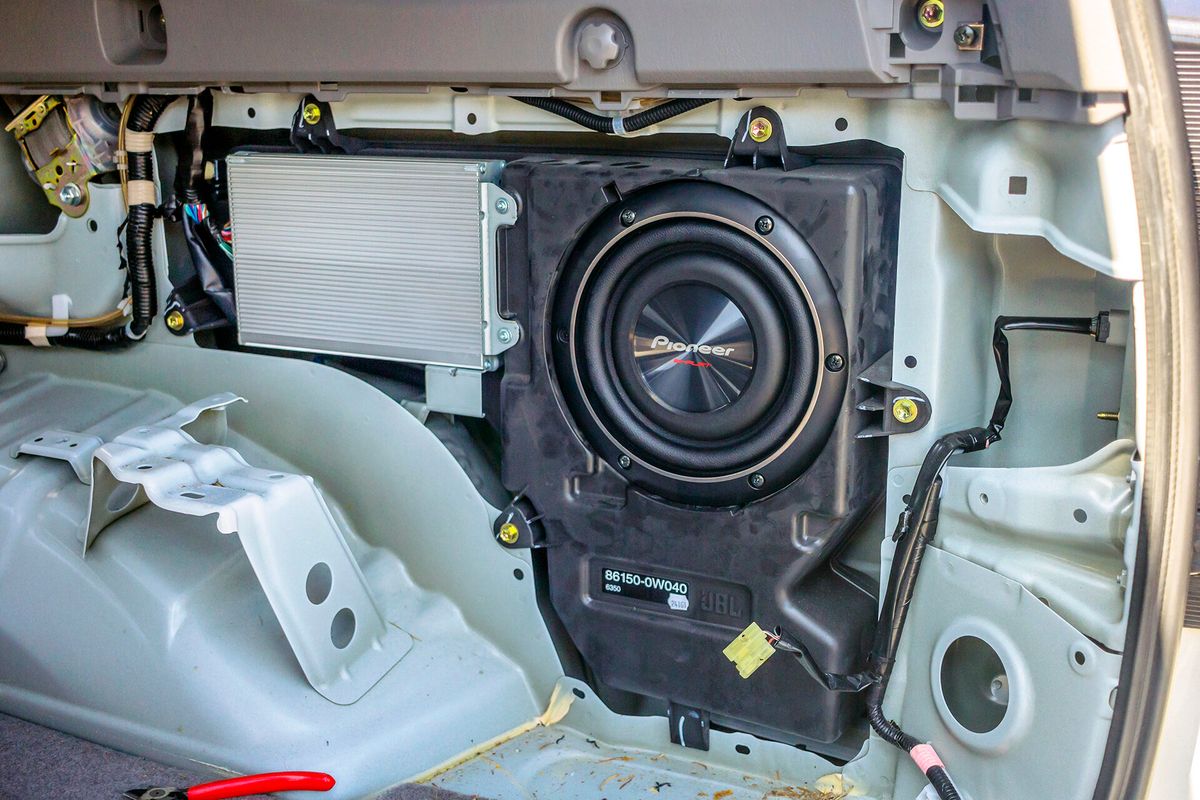

Stereo
How To Add Subwoofer To Factory Stereo
Modified: February 18, 2024
Learn how to enhance your factory stereo by adding a subwoofer for a deeper and richer sound experience. Upgrade your stereo system with ease.
(Many of the links in this article redirect to a specific reviewed product. Your purchase of these products through affiliate links helps to generate commission for AudioLover.com, at no extra cost. Learn more)
Table of Contents
Introduction
Are you looking to enhance the audio experience in your car without having to replace your factory stereo system? Adding a subwoofer to your factory stereo can be a game-changer, delivering deep and powerful bass that will make your music come alive. Not only will a subwoofer improve the overall sound quality, but it will also add depth and dimension to your favorite tunes.
Many people assume that upgrading their car audio system requires extensive modifications and costly equipment. However, adding a subwoofer to a factory stereo is a relatively straightforward process that can be accomplished with a few key steps. In this article, we will guide you through the process of adding a subwoofer to your factory stereo, providing you with the knowledge and confidence to take your car audio experience to the next level.
Before we dive into the details, it’s important to familiarize yourself with your factory stereo system. Take some time to understand its features, limitations, and output capabilities. This will help you determine the most suitable subwoofer and installation option for your specific setup.
Choosing the right subwoofer is crucial as it directly impacts the sound quality and overall performance of your car audio system. There are various types of subwoofers available, such as powered and passive options, each with its own set of advantages and considerations. We will explore these options in detail in the following sections to help you make an informed decision.
Once you have selected the appropriate subwoofer, it’s time to tackle the installation process. We will walk you through the necessary steps to ensure a seamless and secure installation, including wiring and connection options, as well as mounting the subwoofer in your vehicle.
After the physical installation, it’s important to fine-tune the settings to achieve the optimal bass response. We will discuss the various adjustments you can make to customize the audio output to your liking.
Lastly, in the event that you encounter any challenges or issues along the way, we will provide troubleshooting tips to help you resolve common problems that may arise during the process.
Adding a subwoofer to your factory stereo can drastically enhance your listening experience and bring new life to your favorite music. So, let’s dive in and explore how you can take the first step towards upgrading your car audio system.
Assessing Your Factory Stereo
Before you can add a subwoofer to your factory stereo, it’s essential to assess your current setup. Understanding the capabilities and limitations of your factory stereo will help you make informed decisions throughout the installation process.
Start by identifying the make and model of your factory stereo. This information will be useful when selecting a compatible subwoofer and understanding the connections required. You can usually find this information in your car’s owner’s manual or by doing a quick search online.
Next, determine the available audio outputs on your factory stereo. Look for RCA or preamp outputs, which are commonly found on newer car stereos. These outputs provide a clean, low-level audio signal that is ideal for connecting to an external amplifier or a powered subwoofer. If your stereo doesn’t have RCA outputs, you may need to use a line output converter (LOC) to convert the speaker-level signals to RCA.
Consider the power output of your factory stereo as well. This will help determine the type of subwoofer and amplifier you can safely connect. Most factory stereos have limited power output, so it’s important to choose a subwoofer that matches the available power to prevent overpowering or damaging the system.
Additionally, take note of the available space in your vehicle for mounting a subwoofer. Some cars have limited trunk space or unconventional layouts, which can impact the size and placement options for the subwoofer.
Finally, assess the sound quality and performance of your factory stereo. Pay attention to the bass response and overall clarity. If you find that your factory stereo lacks low-end frequencies or sounds muffled, adding a subwoofer can greatly enhance the bass reproduction and improve the overall audio experience.
By thoroughly assessing your factory stereo, you will have a clear understanding of its capabilities and limitations, allowing you to make informed decisions when selecting and installing a subwoofer. This knowledge will ensure that the subwoofer integrates seamlessly with your factory stereo, resulting in a well-balanced and immersive listening experience.
Choosing the Right Subwoofer
When it comes to choosing a subwoofer for your car’s factory stereo system, there are a few factors to consider to ensure the best possible sound quality and compatibility. Understanding these factors will help you make an informed decision and select a subwoofer that meets your audio preferences and installation requirements.
One of the first decisions to make is whether to choose a powered or passive subwoofer. A powered subwoofer, also known as an active subwoofer, includes a built-in amplifier, making it a self-contained unit. This type of subwoofer is easier to install as it only requires a power connection and an audio input from your factory stereo. On the other hand, a passive subwoofer requires an external amplifier to power it, which adds an extra level of complexity to the installation process.
Consider the size and type of subwoofer that will fit your vehicle and meet your desired level of bass performance. Subwoofers come in various sizes, typically ranging from 8 inches to 15 inches in diameter. Larger subwoofers generally produce deeper and more powerful bass, but they require more space for installation.
Another important aspect to consider is the subwoofer’s power handling capacity. This refers to the amount of power the subwoofer can handle without distortion or damage. It’s crucial to select a subwoofer that can handle the power output of your factory stereo or the external amplifier you plan to use. Match the power ratings of the subwoofer and amplifier to ensure optimal performance and prevent any potential damage to the equipment.
Additionally, pay attention to the subwoofer’s frequency response. The frequency response range indicates the lowest and highest frequencies the subwoofer can reproduce. Look for a subwoofer that can reproduce a wide range of low frequencies, as it will provide a more immersive and dynamic bass experience.
Lastly, consider the enclosure type for the subwoofer. Subwoofers can be either housed in a sealed or ported enclosure. Sealed enclosures offer tighter and more accurate bass reproduction, while ported enclosures provide a louder and more boomy bass response. The choice between sealed and ported enclosures depends on personal preference and the desired sound characteristics.
By considering these factors – powered or passive, size, power handling, frequency response, and enclosure type – you can choose a subwoofer that perfectly complements your factory stereo system. Taking the time to select the right subwoofer will ensure optimal performance and an enhanced listening experience in your vehicle.
Wiring and Connection Options
Once you have chosen the right subwoofer for your factory stereo system, it’s time to explore the wiring and connection options to properly integrate the subwoofer into your car audio setup. The wiring and connections play a crucial role in ensuring a clean and reliable signal transfer.
The first step is to identify the audio outputs on your factory stereo. As mentioned earlier, look for RCA or preamp outputs, as these provide a clean and low-level audio signal. If your stereo lacks RCA outputs, you will need to use a line output converter (LOC) to convert the speaker-level signals into RCA signals. The LOC connects to the speaker wires and provides RCA outputs for the subwoofer connection.
Next, identify a suitable location for the subwoofer amplifier. It is best to mount the amplifier in a secure and well-ventilated area, away from direct heat sources. Ensure that the amplifier is properly grounded to your car’s chassis to avoid any electrical interference or potential damage.
For powered subwoofers, the connection process is relatively straightforward. Simply connect the RCA cables from the audio outputs of your factory stereo or LOC to the RCA inputs on the powered subwoofer. Make sure the connections are secure and free from any interference. In addition, connect the power cable from the subwoofer amplifier to the car’s battery, ensuring proper fuse protection in the power line.
For passive subwoofers, you will need to connect the subwoofer to an external amplifier. Connect the speaker wire from the subwoofer to the amplifier’s speaker outputs. Ensure that the polarity is correct to maintain proper phase alignment. It’s also essential to select an amplifier that matches the power handling capabilities of the subwoofer to prevent any problems with overloading or damaging the equipment.
When wiring the subwoofer, it’s crucial to use quality cables and connectors that can handle the power and audio signals without degradation. Avoid using cheap or flimsy cables that may introduce noise or signal loss. It’s also important to properly secure and route the wiring to prevent any interference or damage to the cables.
Before finalizing the wiring and connections, it’s a good idea to double-check all the connections and ensure everything is tight and secure. A loose connection can result in poor audio performance or even damage the equipment. Take the time to carefully inspect and test the connections before proceeding.
By understanding the wiring and connection options, you can ensure a proper and reliable integration of the subwoofer into your car’s factory stereo system. Taking the time to make high-quality connections will result in clean and powerful bass reproduction, elevating your audio experience to new heights.
Installing the Subwoofer
Once you have completed the wiring and connection process, it’s time to move on to the installation of the subwoofer itself. Proper installation is crucial to ensure the subwoofer’s stability and optimal performance.
The first step is to determine the ideal location for the subwoofer in your vehicle. Common locations include the trunk, under the seats, or in the rear cargo area. Consider the available space, accessibility for wiring and adjustments, and the impact on your vehicle’s overall weight distribution.
If you are using a powered subwoofer, installation is relatively straightforward. Most powered subwoofers come with mounting brackets or straps that can be secured to the trunk’s carpet or cargo area. Ensure that the mounting surface is clean and free from any debris that may affect the stability of the subwoofer.
When mounting the subwoofer, it’s important to position it securely to prevent any rattling or movement while driving. Use the provided mounting hardware, brackets, or straps and tighten them securely. Additionally, consider using vibration-dampening materials or foam pads to reduce any potential vibrations or rattling noises.
If you are using a passive subwoofer, you will need to install it in an enclosure before mounting it in your vehicle. Enclosures help optimize the subwoofer’s performance by providing proper airspace and reducing interference. Enclosures can be either sealed or ported, depending on your preferences.
When installing the subwoofer in the enclosure, make sure to follow the manufacturer’s instructions and use appropriate screws or fasteners. Ensure the subwoofer is securely mounted within the enclosure, paying attention to any recommended mounting orientation or alignment for optimal performance.
Once the subwoofer is mounted, take the time to double-check all the connections and ensure they are secure and properly tightened. Any loose connections can result in poor audio performance or potential damage to the equipment.
After the installation is complete, consider taking a test drive to evaluate the subwoofer’s performance. Listen to a variety of music genres and adjust the settings as necessary to fine-tune the bass response to your personal preference. Make sure to take note of any potential distortion, rattling, or unwanted vibrations, and address them promptly to achieve the best audio experience.
By following proper installation procedures, you can ensure a stable and reliable setup for your subwoofer, resulting in an enhanced and immersive bass experience in your vehicle. Take the time to carefully install the subwoofer to enjoy the full potential of your car’s factory stereo system.
Adjusting the Settings
After successfully installing the subwoofer in your vehicle, it’s time to fine-tune the settings to achieve the optimal bass response and overall audio balance. Adjusting the settings will help you tailor the subwoofer’s performance to your preferences and ensure a well-integrated sound system.
Start by adjusting the crossover frequency of the subwoofer. The crossover frequency determines the point at which the subwoofer starts playing and the other speakers in your car take over. This prevents overlapping frequencies and ensures a smooth transition between the subwoofer and the rest of the audio system. Experiment with different crossover frequencies to find the sweet spot where the bass seamlessly blends in with the midrange and high frequencies.
Next, adjust the subwoofer’s volume level or gain control. The gain control allows you to adjust the input sensitivity of the subwoofer. Set the gain to a level where the bass is prominent and well-balanced without overpowering or distorting the other speakers in your car. Avoid setting the gain too high, as it can lead to poor sound quality and potential damage to the subwoofer and amplifier.
Consider adjusting the phase control of the subwoofer as well. The phase control aligns the subwoofer’s sound waves with the rest of the audio system. A properly aligned phase ensures that the subwoofer’s bass frequencies are in sync with the other speakers, resulting in a more cohesive and accurate sound reproduction.
Take note of the equalizer settings on your factory stereo or external equalizer, if available. Experiment with the bass and low-frequency adjustments to find the right balance for your audio preferences. Be mindful of not boosting the bass excessively, as it can lead to distortion or a muddy sound. Aim for a natural and balanced bass response that enhances the overall audio experience.
Additionally, consider the subwoofer’s placement within your vehicle. Sometimes, small adjustments in the subwoofer’s position can significantly impact the bass response. Experiment with moving the subwoofer around to find the optimal placement that maximizes bass impact and minimizes any unwanted resonances or vibrations.
Continuously listen to a variety of audio tracks and genres to evaluate the adjustments you’ve made. Make small adjustments as needed until you achieve the desired bass response and overall audio balance. Remember, personal preferences vary, and finding the perfect settings might take some time and experimentation.
By taking the time to carefully adjust the settings, you can fine-tune your subwoofer to perfectly integrate with your factory stereo system, resulting in a well-balanced and immersive audio experience in your vehicle.
Troubleshooting Tips
While adding a subwoofer to your factory stereo is usually a straightforward process, occasional issues may arise. Knowing how to troubleshoot common problems can save you time and frustration. Here are some troubleshooting tips to help you resolve any issues:
- No sound from the subwoofer: Ensure that all connections are secure and properly plugged in. Double-check the power and ground connections. Confirm that the subwoofer’s power switch is turned on.
- Distorted or muddy bass: Check the gain control settings and lower them if necessary. Excessive gain can result in distortion. Also, consider adjusting the crossover frequency to eliminate any overlapping frequencies.
- Rattling or vibration noises: Make sure that the subwoofer and amplifier are securely mounted and that all screws and bolts are tightened. Check for loose panels or objects in your vehicle that may be causing the rattling noise.
- Uneven bass response: Experiment with subwoofer placement in your vehicle. Moving the subwoofer to a different location can help mitigate any peaks or nulls in the bass response. Additionally, adjust the phase control to align the subwoofer with the rest of the audio system.
- Interference or noise: Verify that all cables are properly shielded and free from any damage. Keep power cables away from audio cables to minimize the chances of electromagnetic interference. Utilize high-quality, shielded cables to mitigate potential noise issues.
- Weak or insufficient bass: Ensure that the subwoofer is receiving a proper audio signal. Check the connections between the subwoofer and your factory stereo or external amplifier. Verify the crossover settings to ensure the correct frequency range is being sent to the subwoofer.
- Overpowering or distortion: Ensure that the subwoofer and amplifier power ratings are matched appropriately. If the amplifier is providing too much power to the subwoofer, it may result in distortion or damage. Consider adjusting the gain control or upgrading to a more powerful subwoofer and amplifier combination.
If you encounter any other issues or problems, consult the user manual for your specific subwoofer and factory stereo system. Additionally, reach out to professional car audio installers or seek advice from online car audio communities for further guidance.
Remember, troubleshooting can be a trial-and-error process, and it is essential to have patience and persistence when resolving any issues. With careful troubleshooting, you can enjoy the full potential of your subwoofer and achieve the desired audio experience in your vehicle.
Conclusion
Adding a subwoofer to your factory stereo can transform your car audio experience by delivering deep and powerful bass that enhances the overall sound quality. Whether you’re a music enthusiast or someone who enjoys a rich audio experience while on the road, upgrading your car’s audio system with a subwoofer is a worthwhile investment.
Throughout this guide, we have provided you with a comprehensive overview of how to add a subwoofer to your factory stereo, discussing key aspects such as assessing your factory stereo, choosing the right subwoofer, wiring and connection options, installation process, adjusting the settings, and troubleshooting tips. By following these steps, you can integrate a subwoofer seamlessly into your existing audio setup.
Remember to assess your factory stereo and understand its capabilities before selecting a subwoofer that matches your preferences. Take into account factors such as size, power handling, frequency response, and enclosure type to optimize the performance of the subwoofer within your vehicle.
Proper wiring and connection are crucial for ensuring a clean and reliable audio signal transfer. Take the time to make high-quality connections, use appropriate cables, and secure the subwoofer and amplifier in a stable location within your vehicle.
Once installed, adjust the settings to fine-tune the bass response and achieve a well-balanced audio experience. Experiment with the crossover frequency, gain control, phase control, and equalizer settings to find the optimal combination for your preferences.
In the event of any issues, refer to the troubleshooting tips provided to help you diagnose and resolve common problems. Remember that troubleshooting may require patience and persistence, but with careful attention to detail, you can overcome any challenges and enjoy the full potential of your subwoofer.
By adding a subwoofer to your factory stereo, you’ll elevate your car audio experience to new heights. Feel the power of deep bass and immerse yourself in the music as you hit the road. Upgrade your car’s audio system today and enjoy a rich, vibrant, and enjoyable audio experience every time you drive.

